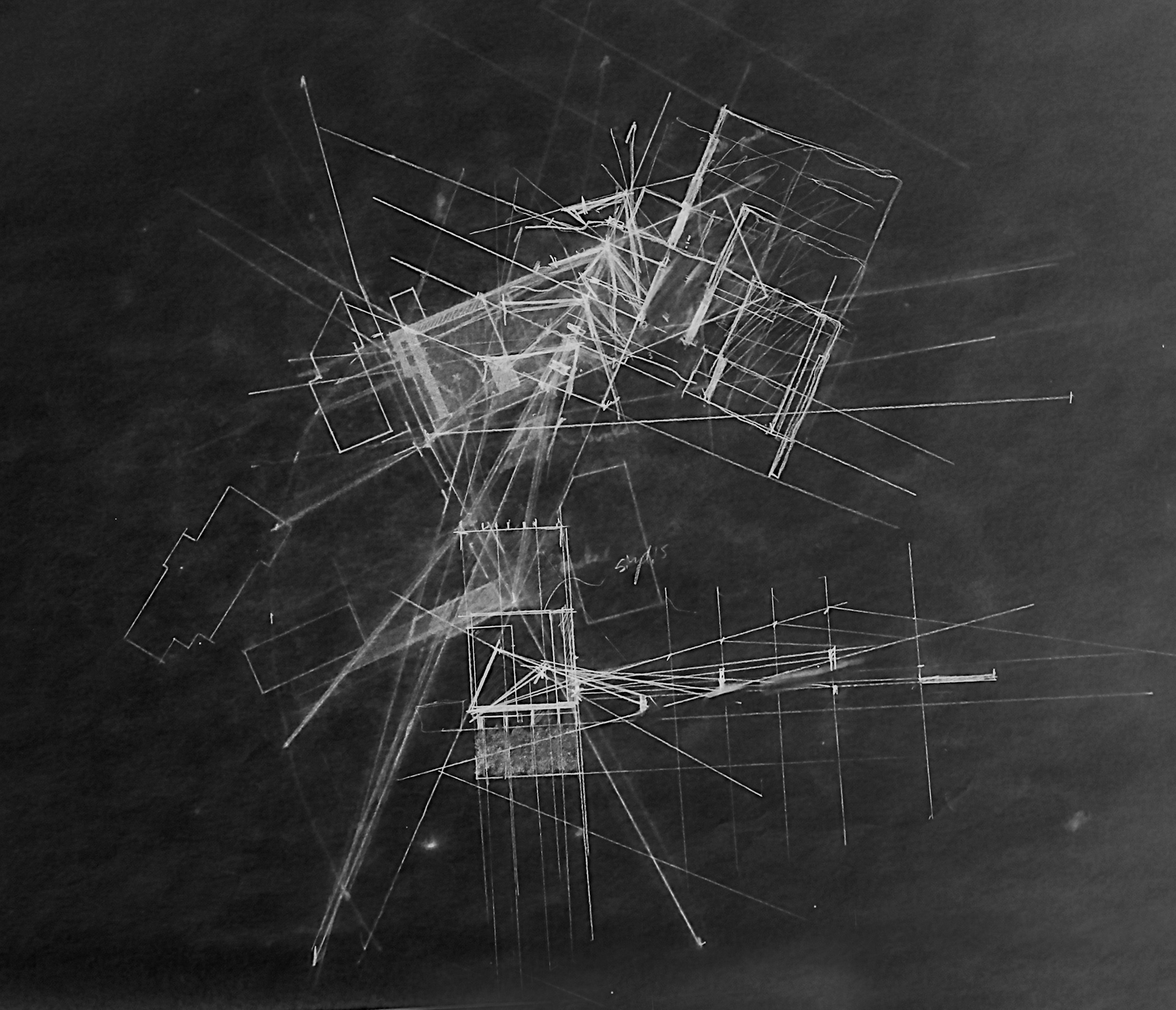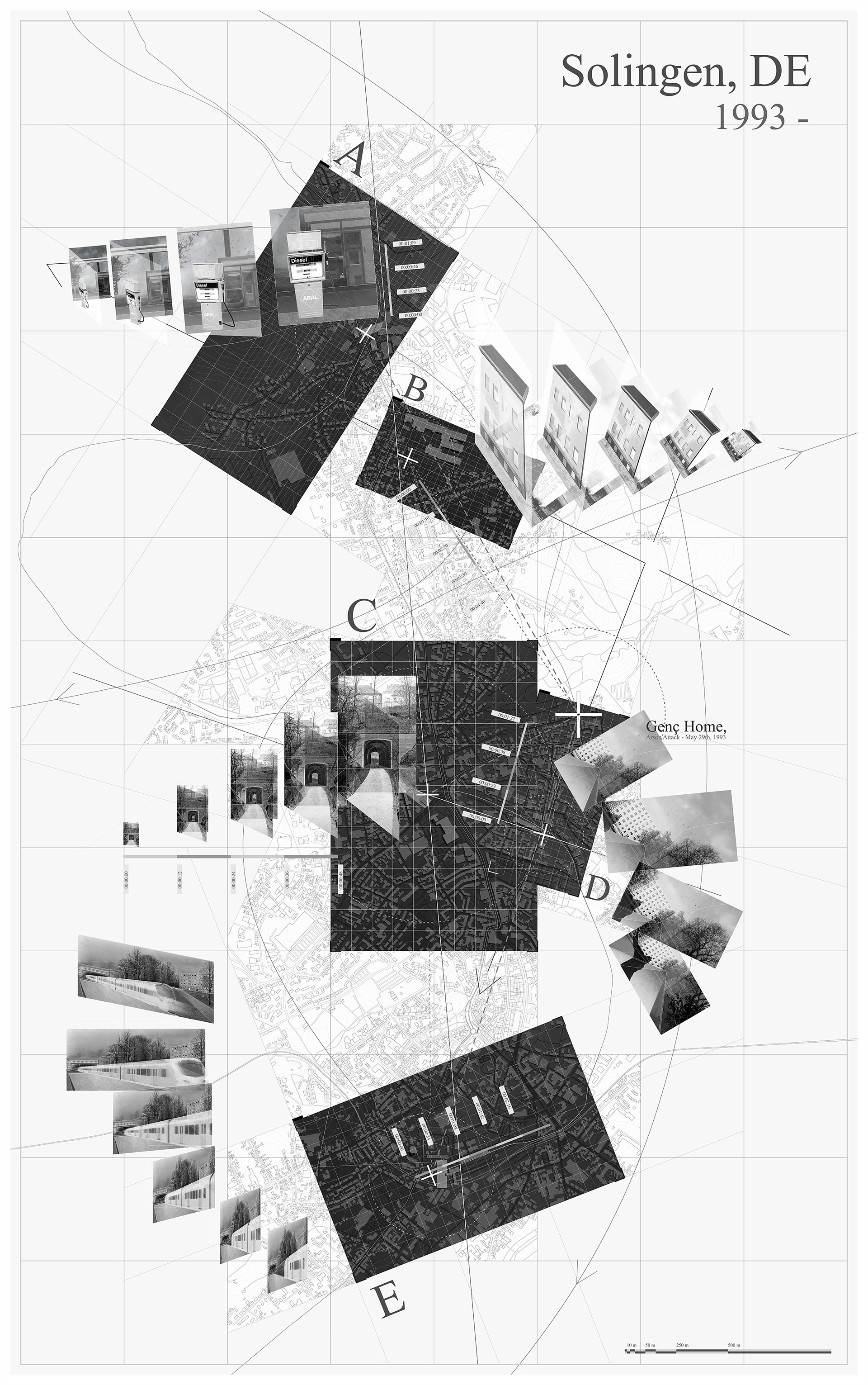Winner : Charles Goodwin Sands Memorial Thesis Award for exceptional merit in architecture
Nomination : Michael Rapuano Memorial Award for design excellence
Research Study : Hunter R. Rawlings III Cornell Presidential Research Scholarship
On May 29th, 1993, four Neo-Nazi skinheads set ablaze the freestanding home of the Genç family in Solingen, Germany killing five and maiming fourteen of its residents. With buildings set ablaze, the thesis reevaluates the architectural conception of the signifier over the signified, building as body’s corporeal obliteration, Postmodernism’s assertions of form as meaning, and site’s simultaneous temporal disassociation and contextual-specificity. The thesis uses arson as a method of destruction to formulate a reconstructed architecture, an architecture that will confront the possibilities of meaning without monumentalizing, deconstruction without absolute abstraction, and memory without recapitulation.
Using the major sites as an instigator to the arson’s remembrance, the interventions produce a tangential index of the attack’s attributes (gasoline catalysts; automotive travel; bystanders, perpetrators, and victims) all within violence’s production of the standstill or Zwischenzeit. A gas station juxtaposed with a child care center, a firehouse combined with a hostel, and community amphitheater facing a ghost platform produce antithetical actions that realize the incident without recapitulating exactly. By reenacting the event of violence tangentially in the everyday, can the memory of the arson be, if not subconsciously, provoked and replayed through dogmatic, seemingly innocuous, and introspective states.




Located at the gas station where the arsonists ascertained the necessary ingredients for the attack, the firehouse and guest hostel neutralize the site of such violence while pointing with its arching gesture the direction to the site of the arson itself.


The final site along the bike path realizes a programming of mutual watching to assert a co-implication of everyday violence. An outdoor amphitheater and ghost quay situate the visitor via self-referential experience while the watch/water tower orients him or her within the greater context of the town.